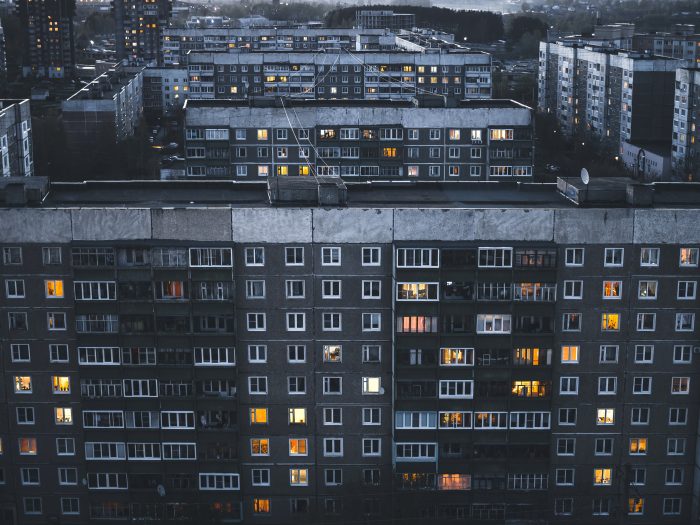A society that forgets art risks losing its soul.
—Camille Paglia, Glittering Images
This week’s headline reads, “Her rent went from $1,426 to $4,493 overnight. It’s doomsday at Santa Fe Art Colony.” Fifty-six creatives displaced, their artistic spirits shuttered off to fend for themselves in an unsupportive economy.
It is not only visual artists caught at the wrong end of our accumulation of wealth cycle. Writers, musicians, yoga instructors, healers, and integrative health practitioners are some of the creative souls that are being displaced from their traditional studio spaces.
Enter the Institutional Investor
Federal law changes seven years ago allowed corporations to enter into real estate as if it were the stock market. That shadow inventory of foreclosures we read so much about? Real estates’ shadows were permeated with light disguised as cash, bestowed by investment banks, hedge funds, and equity-groups.
They were mining from the bedrock of the new American Dream—monthly passive income streams. In this new twist, they were gunning for rent payments. In six years a small government pilot program allowed firms to purchase thirty-six billion dollars of real estate across the nation. With so many properties off the market, the traditional supply-demand balance was taken away. Today, up and down the west coast, finding a rental has become a competitive sport.
Your high-ceilinged, brick-textured, four-room live/work studio can earn four times your current rent in this insane economy. That is if you are fortunate enough to be renting a space that shadows under rent control laws.
Creative Spaces
It is no measure of health to be well adjusted to a profoundly sick society.
—Jiddu Krishnamurti
All creatives know the difficulties in producing and living out of the same small space. Working from the confines of an apartment is often not a solution, particularly if the craft involves tools or dedicated workspaces. If clients need to visit reserved space needs to be available. Just as important is clutter-free office space, and an area to clear your mind, do yoga, meditate and hatch new pathways forward.
As creatives, we need to examine our dedication to craft. Investigate the lengths we are willing to travel to maintain practices that not only support our craft but allow us to thrive.
The following strategies are all means I have and do employ to stay productive as a creative on the West Coast. Most of these options are not live/workspaces, but they are cheap enough so an artist can also pay for housing.
How To Find Cheap Art Studios
- For half the money of corporate storage space, you can find a one- or two-car garage for rent. The one I currently have is up the coast in a beach city. Temperature stability all year, due to the Pacific Ocean, plays well with storing my unsold collection of art. Best of all, being a one-car garage in an alley, it’s convenient for me to pull up, open the door, and get to work.
- Seek out work/trade situations. I built a wood and metal shop in a friend’s back yard. As I was displaced from a previous art studio, my friend offered me the use of his back yard. It was already a creative property, where musicians stopped in to record and practice together. I set up a ten-by-ten-foot space, which has since expanded. It has no walls but is fairly rainproof. It contains a space for yoga, a machine shop, tool shed, office space, and wood and leather shops. I love going there, although winters are tough.
A similar option for work/trade are properties with owners who may need a handyperson’s skills and appreciate a building being converted into a workspace. You might be surprised who would be interested in hosting an artist on their property!
- Consider commercial space rentals. It’s quite easy to find cheap commercial rental space in an office building. My first art studio was in such a building. I was on the sixth floor and had a fantastic view of Old Town Pasadena. My neighbors were lawyers, architects, and accountants. I ran my leather bookbindery out of that space. It cost me $150 a month, and I negotiated extra space in the vast, empty basement when I moved in.
- Convert a sprinter van. My sprinter conversion made it possible for me to be a vendor at farmers’ markets and festivals. I put in all the totes and accessories, a sink and refrigerator, with a loft for the queen-size bed. I was left with plenty of extra space for yoga, meditation, and art! Now when I travel, I can work on a project at any time. No more daydreaming of the day I can return to my studio. A used diesel Sprinter gets twenty-four miles per gallon and costs about ten thousand dollars. Conversion for me happens slowly—bungee cords and cardboard giving way to walnut planks with rounded edges. All in good time.
- Research what is available from city and county art councils, agencies, or departments. Most cities have taken over old military lands and buildings. They often rent these out as subsidized art studios. I rented a 200-square foot studio on the cliffs above the Pacific Ocean. I was there for ten years, paid $183 per month, and by law, that is still the rent today.
The end of the year is a good time to find such a studio. Often artists change things up with New Year’s resolutions. Trimming expenses of an unused art studio makes sense. Best of all, you will be amongst a collection of creative spirits. I had 52 neighbors/artists, and we all shared tools, tips, and friendship.
- Band together with four other artists and rent a house with a two-car garage. Subdivide that into separate live/workspaces. The tricky part with this is that landlords are more involved in their properties than office managers. However, it is difficult to stay productive in a vacuum. We need our tribe and a sense of belonging. Having other creative spirits around is priceless.
- Negotiate with your employer. Sometimes the phone will ring with an offer for employment on a short-term project, or a few months—a fortunate holdover from a previous career. When we are negotiating the terms of my service, and the opportunity exists, I ask for some personal workspace. Twice I landed a private art studio for short-term use. What unused spaces are at your job sites?
Project-Based Spaces
My studios are project-based. I have a painting studio. A print and silk-screen studio. And an office. I have found more balance with multiple workspaces, living a semi-nomadic life traveling between several studios. Each in a different county. My art germinates while traveling.
I hate studio. For me, studio is a trap to overproduce and repeat yourself. It is a habit that leads to art pollution.
—Marina Abramovic












Read 9 comments and reply